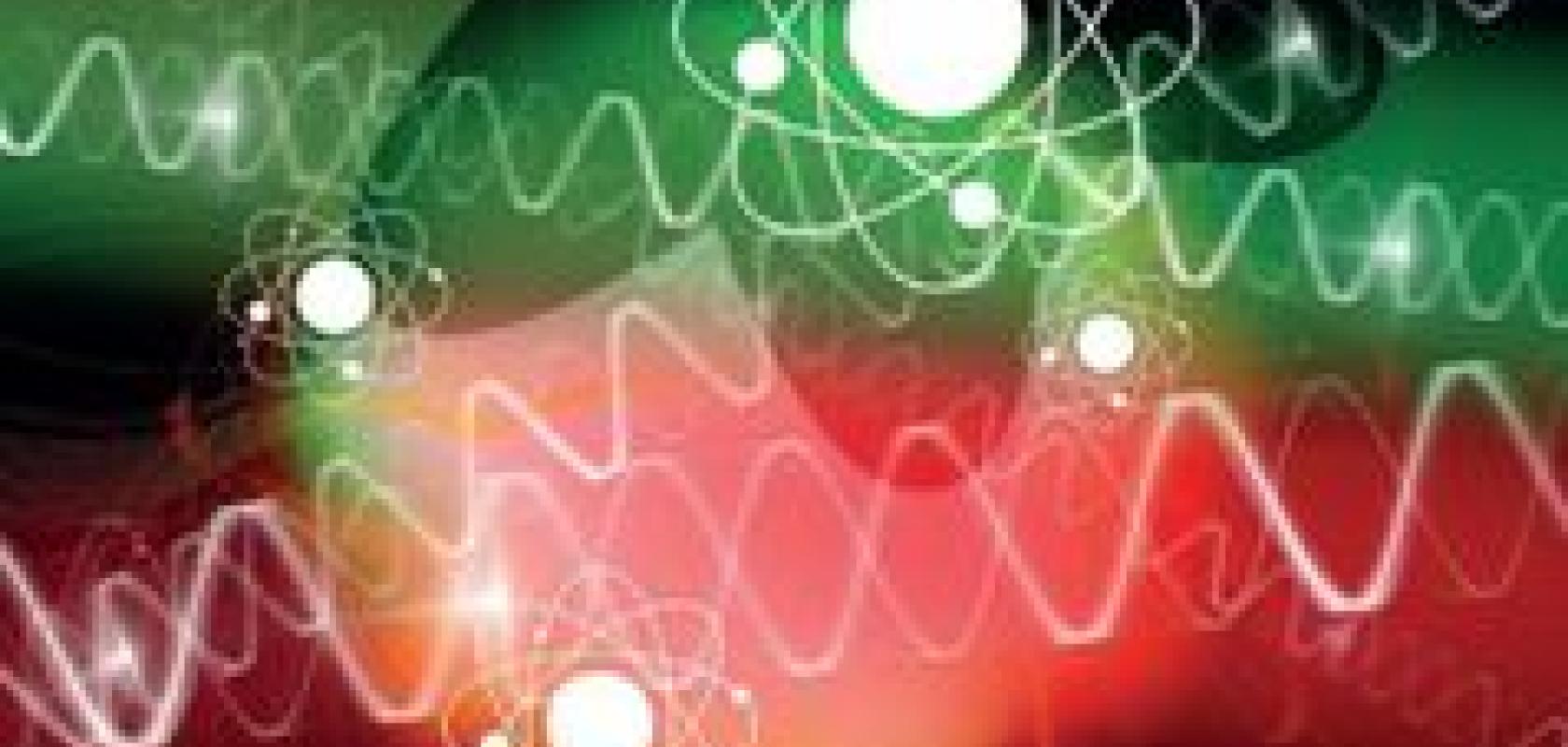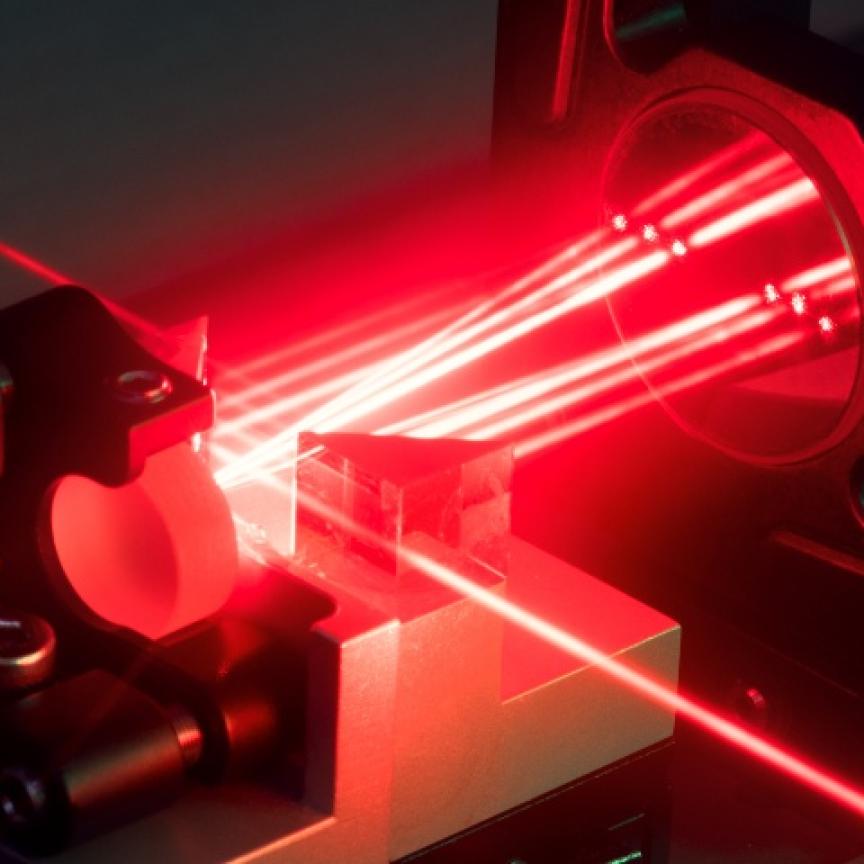A femtosecond is an extraordinarily short length of time. There are about the same number of femtoseconds in a second (1015) as there are tonnes of water in all the oceans of the world. A 10fs laser pulse in the infrared part of the spectrum will contain only three or four complete wavelength oscillations. Femtosecond lasers were, until relatively recently, confined to research, but applications based on the technology are becoming ever more commercial.
Marco Arrigoni, director of marketing for the scientific business unit at Coherent, believes that the use of femtosecond lasers for multiphoton microscopy is one of the more ‘sexy’ applications for the technology: ‘Although this has been around for a number of years, financially this is a very strong area for ultrafast,’ he says. ‘Multiphoton microscopy was developed in the 1990s, and it is now a ubiquitous technique; there are maybe a thousand multiphoton installations in the world at this point, and all of them by definition must use a femtosecond laser.’ The advantage of multiphoton microscopes over their confocal counterparts is that a femtosecond laser is able to penetrate deeper into the tissue under observation, says Arrigoni. ‘Femtosecond lasers use infrared light rather than UV or visible light,’ he says, stating that this is an advantage as it is able to pass through tissues more easily, allowing images to be obtained from a greater depth. ‘The second advantage is that femtosecond pulses actually damage samples less than the UV or visible light used in laser confocal microscopes.’ With confocal microscopy, he says, it is difficult to go deeper than 100 or 150μm into the sample, whereas multiphoton allows imaging at depths of 700-800μm. ‘These depths represent a relatively transparent material, such the brain tissues of a mouse.’
The combination of a deeper imaging depth and the less-damaging effect of the femtosecond illumination pulses allow for some fascinating applications: ‘The height of the capability of multiphoton microscopy is the ability to do in-vivo work,’ explains Arrigoni. ‘Researchers can open the skull of a mouse, replacing the skull with a piece of glass – a microscope cover-slip glued to the bone. The mouse will live for a year like that! He continues his active life without any pain or suffering, but periodically, the mouse is put under the microscope, and the researchers can look at the same neurons after weeks or months. This is very interesting to do studies on aging or the effect of drugs, for example.’
Pushing pulses from femto- to attosecond
‘With femtosecond pulses, several barriers were broken, and there were Nobel Prizes given, for femtochemistry – for example, the use of femtosecond pulses to look at the chemistry of molecules on the femtosecond timescale. Also, femtosecond pulses enabled the generation of frequency combs, and this resulted in another Nobel Prize,’ Arrigoni says, noting that these applications, alongside multi-photon microscopy, are shining examples of what has been achieved with femtosecond technology. ‘Now, what remains is the question of how can we look at the dynamics of electrons in atoms. To answer this, we need to move to the next scale, which is the attosecond scale. How can lasers move there? They cannot directly move there, but they can indirectly enable attosecond pulse generation. There is no such thing as an attosecond laser, and maybe there will never be an attosecond laser, but femtosecond laser pulses allow the generation of attosecond X-ray or extreme UV pulses.’
The process by which these attosecond pulses are generated, says Arrigoni, is similar in principle to the way in which an ultrafast amplifier works, adding that current-generation commercial amplifiers, such as those supplied by Coherent, are able to supply pulses of 20-25fs. ‘You take these pulses and you send them into a hollow fibre; it is a one metre long fibre, hollow inside, with an internal diameter of 200-400μm. The external diameter is irrelevant. This fibre is enclosed in a noble gas atmosphere – usually Argon.’ The 20-25fs pulse, subsequently sent into the fibre, must have an energy of close to a millijoule, he says, hence the need for amplification. ‘You get a combination of effects, the most important of which is self phase modulation (SPM) in the gas, which broadens the spectrum of the pulse. If the pulse has an initial spectrum of 50-60nm, at a duration of 20-25fs, at the output of this fi bre, the bandwidth of the pulse will have become 300nm. At this point you can recompress the pulse, to achieve pulses of 5 or 10 femtoseconds.’ The recompression of pulse length is achieved using a pair of negative dispersion mirrors (also called NDMs, or chirped mirrors), and the 5-10fs pulses retain their broad bandwidth.
Pulses of 5fs are still three orders of magnitude away from the attosecond regimes required to take spectroscopy to the next level. Arrigoni describes the way in which these pulses are further shortened: The broad-bandwidth pulses centred on the 800nm wavelength (infrared) are sent into another chamber containing more noble gas. Here, the pulse generates higher harmonics – a series of pulses at wavelengths in the extreme UV region between 5nm and 50nm. ‘If you select one of these wavelengths, and have the right conditions, these short wavelength pulses can be just a few hundred attoseconds long.’
To give an idea [of the application for attosecond pulses], the period of electron motion in a hydrogen atom is about 24fs. If we are making a multi-body, particle analogy of the motion of the electrons in atoms, then the electron revolves with a periodicity of tens of attoseconds,’ says Arrigoni, noting that the current pulse lengths of a few hundreds of attoseconds are not yet short enough to resolve these motions. ‘We would need to go below 100as to resolve these processes. There is still more work on the production of attosecond pulses than the utilisation of these pulses, because it’s an emerging field. The role of laser companies like Coherent is to make the back end more accessible and hands-off. The researchers are the ones building the attosecond generator, but we will provide the femtosecond engine at its heart.’
'True attosecond experiments will take a few more years'
In some ways the development of attosecond-regime pulses has mirrored that of its pulse-length predecessors; years of research went into reliable generation of femtosecond pulses before applications were realised, and the same is true of picosecond lasers before them. Picosecond lasers are now becoming ever more ubiquitous in industry, as methods of generating them become more robust and affordable. ‘If you look at the femtochemical experiment that led to Zewail being awarded the Nobel Prize [in 1999], there are no equivalent attosecond experiments yet,’ says Arrigoni. ‘There are attosecond pulses being generated in many different locations, but true experiments will take a few more years.’
Many of the developments of commercial femto- and picosecond lasers have the aim of making the systems more robust and affordable. Time Bandwidth, a spin-off from ETHZ federal university in Zurich, Switzerland, manufactures semiconductor saturable absorber mirrors (SESAMs) with this aim in mind. Hans-Peter Wunde, European sales manager at the company, describes the devices. ‘The SESAM is a multilayer structure, with a semiconductor absorber embedded in it. It functions as a passive mode-locking device. In other systems, commonly Ti:Sapphire laser systems, you can have a Kerr lens mode-locking mechanisms instead,’ he says, referring to an older technique for achieving passive mode-locking, exploiting a nonlinear self-focusing effect. ‘The advantage of the SESAM technology is that it makes the system very robust, stable, and absolutely self-starting. The SESAM is also a non-wearing component.’ The devices are used in both picosecond and femtosecond lasers, in both scientific and industrial applications. Unlike other Kerr lens techniques, SESAMS can be used with Ti:Sapphire, vanedate, or Nd:Glass based lasers, depending on the wavelength and bandwidth characteristics required. ‘For picoseconds and pulses of 100-200 femtoseconds, the SESAM makes the optomechanical design very simple, and makes for a very robust and stable laser. This is what industry needs.’ Wunde notes that although SESAM technology is becoming the standard in many ultrafast applications, at the short end of the femtosecond scale, Ti:Sapphire lasers with Kerr lens mode-locking are still used in order to achieve the broad bandwidth required.
The ultrafast laser systems produced by Time Bandwidth follow the master oscillator power amplifier (MOPA) architecture. One way in which the reliability of these MOPA systems is increased, Wunde says, is through the use of non-regenerative amplifiers: ‘This is the big difference compared to other amplification concepts, leading to a more stable, more reliable, and more forgiving device.’ He describes the difference between a regenerative and non-regenerative amplifier: ‘A regenerative amplifier is a cavity with a pulse coupled into it, travelling back and forth; the pulse is amplified each time it passes through the gain crystal – a rod or a disk, and it always takes the same route through that crystal. Imagine if one optic is misaligned – the beam will hit that optic 10 or 20 times, and each time it will be deviated by a small amount. In non-regenerative amplifiers, the beam uses a different path on each pulse, and so a misalignment of a single optic does not have such a strong effect. It is just one example, but it does make the laser more forgiving.’
Why pump source quality and reliability is critical for ultrafast lasers
‘The quality and reliability of the pump source is paramount to the ultrafast oscillator’s performance,’ says Joshika Akhil, sales manager at Laser Quantum. Akhil describes some of the developments of pump lasers, in terms of both reliability and affordability: ‘Laser Quantum manufactures the pump source for ultrafast oscillators; the Finesse and Opus product ranges were designed specifically to address a gap in the market where there was a demand for compact, simplified pump sources with a diffraction-limited beam.’
One area in which these specially designed pump lasers excel is in the layout of the device: ‘We received requests from our ultrafast partners for compact pump lasers in which the pump diode is in the laser head,’ says Akhil. ‘The key advantages of this approach are significantly lower costs and much more compact and robust lasers, free of any complications due to the fibre feed and the associated bulk of the high-power diode driver. The pump source is the single most active component in an ultrafast system, and it often represents the main cost driver for the entire unit.’
One other key area in which improvements have been made is in the reduction of running and maintenance costs for the system: ‘We’ve seen a trend in the ultrafast community towards compact pump laser sources without external water cooling requirements. The size, longevity and robust design of 532nm pump sources are traditionally key parameters that integrators and end users consider when designing their projects, and we’ve increasingly seen a preference towards systems without external (active) cooling requirements,’ says Akhil, noting that external cooling adds to a system’s cost and running expenses significantly. ‘By reducing, or taking away completely the dependence on water cooling, there are significant advantages in terms of running costs and maintenance.’ The company’s Finesse series of pumping fibre lasers is designed with this aim in mind, with integrated temperature control mechanisms eliminating the need for water cooling.
There are certainly many methods available for building a cost-effective ultrafast laser in the picosecond to several hundred femtosecond range. Going forward, we can certainly expect to see the technology become cheaper, and for more applications to be found for femtosecond – and even sub-femtosecond – pulsed lasers.


